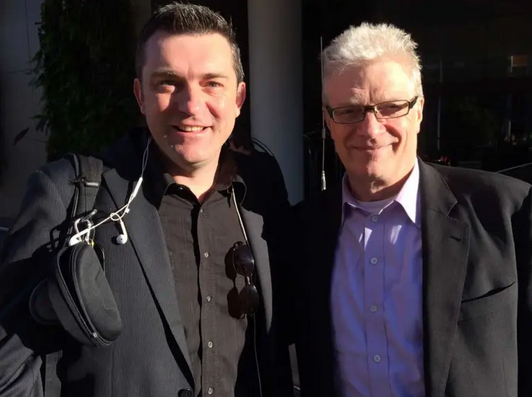CREATIVITY MATTERS - throughout the curriculum
Written by Dr Tim Kitchen, Senior Education Specialist, Adobe
Tim will be presenting at the National Education Summit this year in both Melbourne and Brisbane
Early in 2022, I presented a live webinar to about 500 (K-12) teachers and posed the following range statement in a poll - Creativity in education is only important in the Arts subjects. About 30% of the educators either agreed or strongly agreed and about 65% either strongly disagreed or disagreed. When it comes to the topic of creativity and its importance in the curriculum, there seems to be a broad set of opinions.
I recently published an article where the following four questions were posed:
What is creativity?
Why is creativity important?
Can anyone be creative?
How can creativity be taught and assessed?
The full article can be found via https://bit.ly/creativity-matters22. For this post, I would like to focus on the first two key questions.
What is creativity?
There are many different aspects to creativity and there is no one definition with which everyone is happy. In my article, I refer to 10 different definitions from a range of highly regarded academics as well as a mixture of every day classroom teachers.
American psychologist, the late Dr Ellis Paul Torrance from the University of Georgia says aspects of creativity include uniqueness, fluidity, flexibility, elaboration, humour & avoidance of premature closure. He also says that creativity is the process of becoming sensitive to problems, deficiencies, gaps in knowledge, missing elements & disharmonies. (Torrance & Wu, 1974). I love these definitions, especially the reference to humour. I always found that encouraging a positive and encouraging sense of humour in the classroom helped students feel comfortable and more open to the learning process.
Linking creativity to an avoidance of premature closure is also interesting. Doing creativity well can be hard work. The late Seymour Papert (the inventor of the Constructionism learning theory) associated the creative process with doing Hard fun. He wrote an article titled Hard Fun in his Daily Papert series and concluded that everyone likes hard challenging things to do. But they have to be the right things matched to the individual and to the culture of the times.
Another famous Papert quote from his book Mindstorms is that … the role of the teacher is to create the conditions for invention rather than provide ready-made knowledge (Papert, 1980). He is telling educators that, rather than teaching to a test, regurgitating a text-book and reciting content that students can easily find with a quick search, the role of a teacher is to encourage a culture of creativity in the classroom where students are encouraged to build on their knowledge and develop deeper learning by creating rather than passively listening or reading.
Another thought leader in this area, Professor Ellen Jane Langer from Harvard University, says that creativity has dynamic qualities with the power to explore uncertainties that can reveal multiple perspectives during an activity (Dunoon & Langer, 2011). Looking at problems from a range of perspectives and coming up with a variety of potential solutions to a program is a very creative process. Many students find this process a challenge and prefer to stick with the first solution that they or their group come up with. Brainstorming a range of potential solutions help students to think about problems from a range of perspectives and encourages a creative and open mindset.
In September 2019, I invited a group of primary, secondary and post-secondary educators who were part of the Asia Pacific Adobe Education Leaders program to the Adobe Office in Sydney for the 2019 APAC Adobe Education Summit. One of the activities we conducted was to put them into small groups and get them to agree on a definition of creativity then present that definition on camera. Some of the results included …
Creativity is about finding connections between divergent ideas that don’t always happen in isolation … our most creative thinkers are those that can see barriers and they can push past them, so they look outside their environment (Emma, Ali & Michelle).
Creativity is about setting up a situation or an environment where students are able to achieve greater than what we would even expect from them and then push it further to the boundaries (Trevor, Michelle & Craig).
Creativity is curiosity over fear … being able to have the courage to do new things and challenge yourself … it’s just making stuff, lots of stuff and having a go (David, Chris, David & Juliette).
Why is creativity important?
Professor Alane Starko, Educational Psychologist from Eastern Michigan University and author of the creativiteach.me blog says, … regardless of the field or the problem, we are going to need creativity as we move forward … All of us need to be able to think about things flexibly, to take risks, to solve problems, to move on when things aren’t going exactly the way we expect to be resilient and to communicate – all key aspects of creativity (Adobe, 2021).
In 2016, the World Economic Forum predicted that by 2020, Creativity would be the third most important skill to thrive in the future, just below critical thinking and complex problem solving (World Economic Forum, 2016). The Future of Jobs Report 2020 continues to list creativity in the top 5 skills to thrive in the future (World Economic Forum, 2020).
In a recorded conversation by the Adobe Education Team titled Why is Creativity Important in Education?, Sir Ken Robinson says that the education system has been set up by politicians to focus on the future of the economy with a priority on subjects and disciplines that are thought to be more useful and an obsession with standardised testing and conformity. Yet, business leaders say that they want people who are creative, who can innovate and think differently – who can work in teams and communicate. Key skills that are not encouraged within today’s education systems. Business leaders and hiring managers are looking for candidates who are creative, but they are being faced with a generation of students coming through schools who haven’t been encouraged to develop these abilities. Sir Ken argues that the economic imperative for teaching creativity systematically in schools has never been greater (Adobe, 2020b).
The importance of creativity in the Australian curriculum was formally recognised in 2010 by outlining Critical and Creative Thinking as one of the seven General capabilities to be integrated into all Learning areas. This means, as a policy, teachers should be integrating a creative thinking approach to all subject areas where possible along with other general capabilities such as literacy, numeracy and information and communication technology.
In Sir Ken Robinson’s famous 2006 TED Talk titled Do Schools Kill Creativity he said, Creativity now is as important in education as literacy, and we should treat it with the same status (Robinson, 2006).
Dr Tim Kitchen and Sir Ken Robinson
Get Creative with Adobe
In December 2021, Adobe re-branded Adobe Spark and added new apps and features as they launched the new Adobe Creative Cloud Express for Education – free for all K-12 schools. This means that at no cost to the school, every K12 teacher and students can use the browser based Creative Cloud Express apps to make info graphics, posters and other graphics as well as simple video stories and web pages. They can also take video to the next level with Premier Rush via their laptops, desktops or mobile devices taking advantage of the amazing Photoshop Express image manipulation application.
We have set up a one-stop resources for help and support with Creative Cloud Express for Education via - https://adobe.ly/express-apac
Join the email list for the monthly Australasian Adobe in Education update newsletter via https://adobe.ly/contact-edu-apac
Find out about free and exciting professional learning opportunities via the Adobe in Education Coming events site - https://adobe.ly/eduevents
Conclusion
Creativity is a skill-set that is in high demand by society and industry and should be a focus in all areas of the curriculum. As of 2010, developing critical and creative thinking skills as a general capability has been Australian Curriculum policy. Let’s use the amazing technology that is at our fingertips to teach and enhance creativity to that out students are better prepared for the future.
Tim will be presenting at the National Education Summit this year in both Melbourne and Brisbane
Tim Kitchen can be contacted via www.linkedin.com/in/tim-kitchen/
References
Adobe, 2021. Adobe Creative Educator, Empowering educators who inspire creativity for the next generation, online available (Jan, 2022) https://edex.adobe.com/adobe-creative-educator
Dunoon, D. & Langer, E. 2011. Mindfulness and leadership: Opening up to possibilities. Integral leadership Review
Papert, S. Hard Fun, The Daily Papert online available (Jan, 2022) – http://dailypapert.com/hard-fun/
Papert, S. 1980, Mindstorms: Children, Computers, and Powerful Ideas. New York, NY: Basic Books.
Robinson, K. 2006, Do Schools Kill Creativity, TED Talks, online available ( Jan, 2022) - https://www.ted.com/talks/ken_robinson_says_schools_kill_creativity
Torrance, E. P. & Wu, Y., 1974 Torrance Tests of Creative Thinking. Personnel Press, Ginn. Xerox Education


